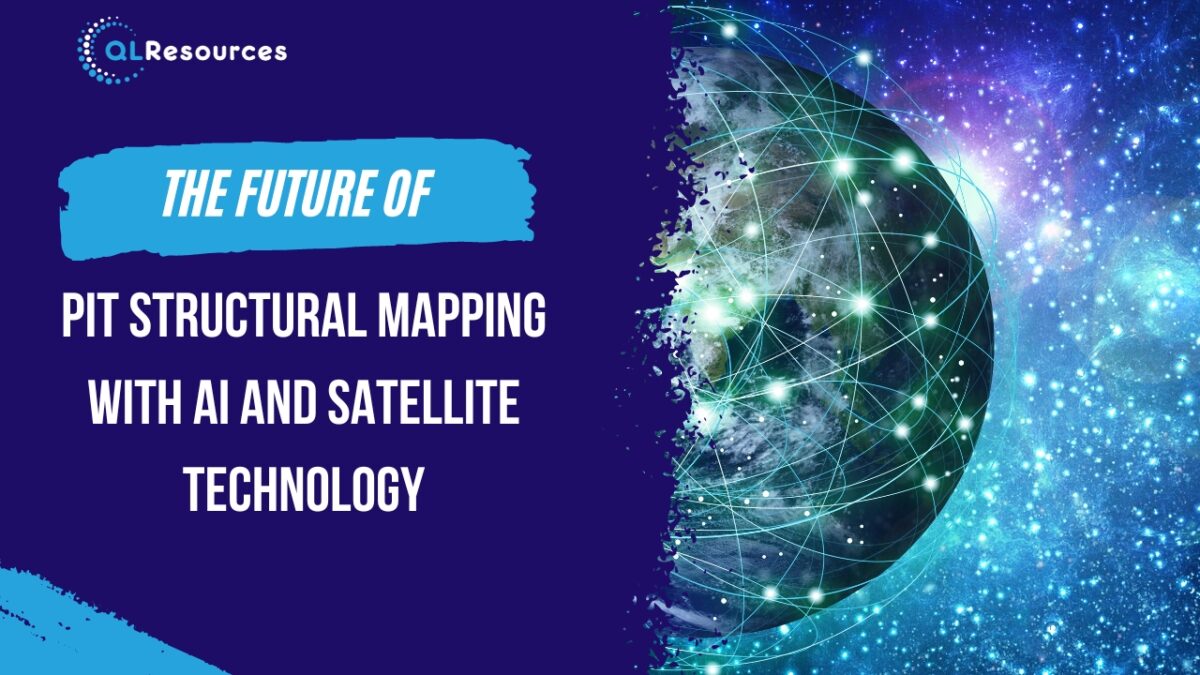Pit structural mapping is an essential task in mining operations as it provides insights into the geological features of the pit, which is crucial in the optimisation of mining processes. However, traditional pit mapping techniques can be time-consuming and costly, and may not provide accurate and comprehensive information. In recent years, the integration of AI and satellite technology has made it possible to revolutionise pit structural mapping, offering unprecedented levels of accuracy and efficiency. Here are some ways in which AI and satellite technology are expected to shape the future of pit structural mapping:
1. Remote Sensing
Satellite imagery has already been used in the mining industry for several years, but recent advances in remote sensing technology have enabled more accurate and detailed mapping of pits. AI algorithms can be used to analyse high-resolution satellite images to identify geological features, including faults, dykes, and other structures, with a high degree of accuracy. This allows mining companies to gain insights into the pit’s structure without having to send ground teams to conduct surveys, saving time and reducing costs.
2. Lidar
Lidar (Light Detection and Ranging) is a remote sensing technology that uses lasers to generate 3D maps of an area. In pit mapping, lidar can be used to generate high-resolution, detailed maps of the pit, including information about the structure of the walls and the location of geological features. AI algorithms can then be used to analyse the lidar data and identify areas that may be at risk of collapse or other hazards. This information can be used to improve safety in the pit, reducing the risk of accidents and injuries.
3. Machine Learning
Machine learning algorithms can be used to analyse data from multiple sources, including satellite imagery, lidar, and geological surveys. This allows mining companies to create more comprehensive and accurate maps of the pit, incorporating data from a range of sources. Machine learning can also be used to identify patterns in the data, providing insights into the structure of the pit that may not be immediately apparent to human analysts.
4. Autonomous Drones
Drones are already being used in mining operations to survey pits and gather data about the geological structure. However, the use of autonomous drones that can fly without human intervention is expected to become more common in the future. These drones can be equipped with sensors and cameras to capture detailed data about the pit’s structure and geological features. AI algorithms can then be used to analyse the data and generate comprehensive maps of the pit.
5. Predictive Analytics
AI and satellite technology can be used to generate predictive models of the pit’s structure, allowing mining companies to anticipate potential hazards and plan mining operations accordingly. For example, predictive models can be used to identify areas that may be at risk of collapse or other geological events, allowing mining companies to take preventive measures and reduce the risk of accidents. Predictive models can also be used to optimise mining operations, allowing mining companies to extract the maximum amount of resources while minimising the risk of environmental damage.
In conclusion, the integration of AI and satellite technology is expected to transform the future of pit structural mapping in the mining industry. The use of remote sensing technology, lidar, autonomous drones, and machine learning algorithms can help mining companies generate accurate and comprehensive maps of the pit, identify potential hazards, and optimise mining operations. These technologies can also help reduce costs, increase efficiency, and improve safety in mining operations. As the field of AI and satellite technology continues to evolve, it is expected that new and innovative solutions will emerge, further improving the accuracy and efficiency of pit structural mapping in the mining industry.
